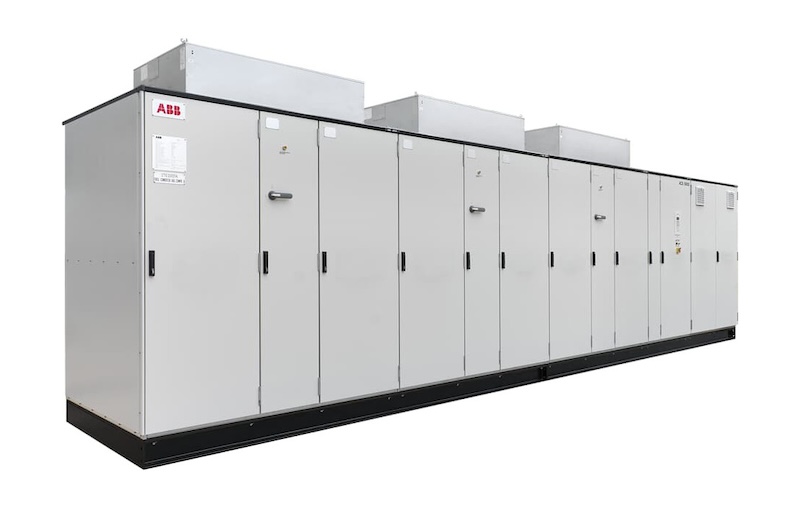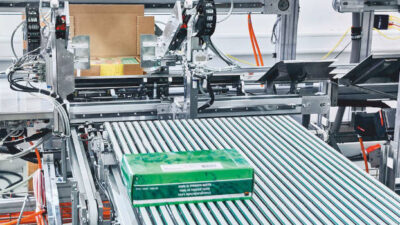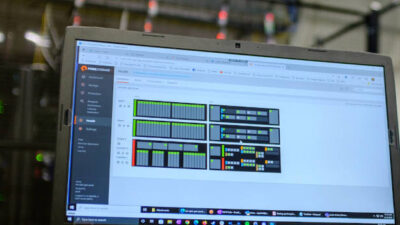Converting carbon-intensive industrial applications helps meet decarbonization goals. Are you addressing these four areas: Renewable energy, electrification, emerging application and energy efficiency?

Learning Objectives
- Understand four ways decarbonize energy-intensive industries by using renewable energy, electrification, emerging applications and energy efficiency.
- Review industrial decarbonization investments and examples from a provider of electrification and industrial automation and drive systems.
- Understand the importance of strategic data management in preventing issues related to long-term storage and resource utilization.
Decarbonization and sustainability insights
- Decarbonize energy-intensive industries in four ways by using renewable energy, electrification, emerging applications and energy efficiency.
- A provider of electrification and industrial automation and drive systems provides examples of industrial decarbonization investments.
Daily necessities and comforts – such as food, shelter, transportation, heating and cooling, etc. – depend on output from energy- and carbon-intensive industrial sectors, such as the production of oil and gas, chemicals, cement, iron and steel and minerals. The demand for these products is expected to remain high. As explored in a prior article “How to meet sustainability goals, part 1: High-efficiency motors”, the rising global population, coupled with rapid urbanization and increasing living standards, is set to drive a significant surge in energy demand and industrial output. This heightened demand poses challenges for industries worldwide to balance economic growth with environmental sustainability. This second installment of a three-part series, explores converting carbon-intensive applications, exploring strategies to address challenges and paving the way towards a more sustainable industrial future.
Industry accounts for a third of global energy consumption1, with heat generation2 and rotating equipment being the most significant contributors. Fossil fuels remain the dominant energy source for industry, making them a bigger source of greenhouse gas emissions than power generation and transport. Whereas emissions from power generation and transport have the potential to drop through the increase in power generation from renewable energy sources and the transition from internal combustion to electric vehicles, industrial emissions are projected to grow over the coming decades3. Reducing carbon dioxide emissions from the industry sector through scalable and affordable decarbonization solutions will be critical to work toward a net-zero emission scenario.
Four considerations to decarbonize energy-intensive industries
To decarbonize energy-intensive industries, consider:
-
Renewable energy: Enable a shift in power generation towards renewable energy sources, such as wind or solar
-
Electrification: Replace fossil fuel-based applications in rotating equipment or heat generation with electrical solutions, such as by replacing a gas turbine with an electric drive-motor powertrain
-
Emerging applications: Deploy near zero-emission production processes enabled through carbon capture, utilization and storage (CCUS) or hydrogen
-
Energy efficiency: Reduce energy losses through the use of highly efficient electric motors in combination with a variable frequency drive (VFD).
Renewable energy: How industrial technologies are helping
Renewable energy sources, such as wind, solar, and hydroelectric, offer a way to produce clean electricity. Until recently, these sources have been hard to scale, making them expensive compared to fossil fuels. They also pose a challenge of consistency in delivery due to the variability of supply depending on the source. Advancements in technology and the systems used to capture and deliver energy, coupled with electric systems to provide electricity during peak demand or when a source is not available, have made the use of renewable sources more viable for industry. By 2035, projections suggest that renewables could provide more than 50% of the world’s electricity at prices lower than operating with fossil fuel4.
Grid instability is an issue that will need to be addressed as renewables become more prevalent as an energy source due to the variability of the power supply and fluctuations in demand based on location and time. Using technologies such as battery storage, converters and demand-management programs will minimize the challenges of grid stability.
Electrification to decarbonize energy-intensive industries
The decarbonization of energy-intensive industries can only be achieved through electrification.
Decarbonization through electrification means replacing a fossil fuel-based application with an electrical solution. Rotating equipment, such as a compressor, can be driven by an electric powertrain – an electric motor combined with a VFD – instead of a gas or steam turbine. Besides removing carbon emissions from a process, electrical powertrains offer additional benefits over mechanical solutions, such as enhanced personal safety features, reduced maintenance, lower noise emissions or better process control.
Beyond rotating equipment, significant potential for decarbonization comes from the electrification of industrial heat production. The generation of heat accounts for three-quarters of the overall energy consumption in the industrial sector; 90% of that heat is produced by burning fossil fuels2. Technological development in applications such as industrial heat pumps or plasma torch heating will increase the adoption of electrical heat generation. Combined with thermal storage solutions and the right process control, electric heat production can contribute to load balancing, which will positively contribute to grid stability and offset fluctuations in power generation from an increased mix of renewable energy.
Often, carbon-intensive equipment can be directly replaced with electrical alternatives. For rotating equipment, such a solution typically consists of an electric motor driven by a VFD or for electric heating, DC power is supplied by power electronic conversion equipment using similar technology as a VFD. Depending on the application, the complete system may include other components, such as electrical houses (eHouses), low-voltage or medium voltage (LV or MV) switchgear, or additional equipment. In many cases, electrical solutions are drop-in replacements, making the transition easier, while in others, they require new infrastructure and are considered in facility upgrades or retrofits. Electrification offers other benefits, such as increased reliability, ease of maintenance and better motor control and efficiency.
Electrification has a greater impact on decarbonization efforts if the solution leverages renewable power sources. However, moving to a complete motor-drive system to generate electric energy, regardless of energy source, offers a reduction in the carbon footprint.
Emerging applications to help industrial decarbonization
Adopting emerging applications and new technologies is another opportunity in decarbonizing process industries. Low-carbon fuels, such as hydrogen, renewable natural gas and sustainable aviation fuels, are one area. Green hydrogen production from electrolysis bridges the gap between electricity and chemical energy carriers, where direct electrification is not feasible. Electrolysis power supplies rely on similar power conversion technology used for electric heating applications. The technology is common with VFDs, which have been broadly used across many industries for decades.
Solutions for other applications, such as carbon capture, utilization and storage (CCUS) and renewable natural gas (RNG) options also are critical. Simply put, CCUS is the process of capturing, storing and reusing carbon dioxide. Carbon capture is especially attractive in hard to abate industries. RNG is a biogas produced from landfills and other waste operations, such as livestock farms, wastewater and food production operations.
Digitally enabled systems, including drives and motors, and other technologies to manage and optimize processes are required to make these applications adaptable to provide energy for different industries. Here it is also important to work with a partner that understands the challenges and can provide the right equipment as well as design, execute and deliver a solution.

How energy efficiency helps industrial decarbonization
Energy must be used efficiently to reduce our impact on the environment, making choosing the right equipment essential to achieving greater efficiency gains faster. Using high-efficiency motors in the system offers a direct reduction in electricity consumption. Even more significant energy savings can be achieved by adding a variable frequency drive to the powertrain.
Without a variable frequency drive, the motor runs constantly at full speed, and the process is controlled through valves and dampers. This results in substantial inefficiencies, as the motor runs at near-rated power, regardless of the process requirement. A variable frequency drive matches motor speed with the actual demand of the process and reduces the energy consumed by the motor. Therefore, the system operates more efficiently, especially for operating points at partial loads. Adding a variable frequency drive to the motor system results in substantial energy savings5. In the example of a fan, reducing rotating equipment speed by 20% can reduce input power requirements by approximately 50%.
Despite this opportunity, on average, only 16% of U.S. industrial motor systems use variable frequency drives6. Adding a variable frequency drive to electrification systems optimizes energy consumption and allows for smoother start-ups and better lifetime reliability of the motor-driven system.
If the demand for global energy continues to rise, as currently indicated, it is imperative that companies take the necessary steps to work towards reducing emissions and energy usage. Renewable energy sources and electrification technologies, including high-efficiency motors, variable frequency drives, energy storage systems and other areas offer solutions to reduce overall energy consumption and achieve decarbonization goals.
Industrial decarbonization investments, examples
ABB designs, produces, and delivers complete electrical powertrain and power conversion solutions to serve customers as they move toward more sustainable electric power generation, increase efficiency, and reduce carbon emissions from industrial processes. For instance, ABB technology supports the hydrogen industry by providing a range of comprehensive rectifier solutions for electrolyzer power supplies in the production and electric motors and VFDs in the transportation and storage of hydrogen. These components address common challenges around harmonic distortion, footprint, and energy efficiency.
In 2024, ABB is investing nearly $100 million in a greenfield campus in New Berlin, Wisconsin, that will showcase on-site generation of renewable energy through solar electricity and geothermal heat pumps to reduce wasted heat and energy usage by 45%.
Part three of this series will cover maximizing industrial energy efficiency with motion services, building upon the decarbonization strategies explored in part two and the foundational role of high-efficiency electric motors discussed in part one. This installment will delve into how motion services optimize energy consumption and enhance operational reliability, helping industrial sustainability and addressing the increasing global demand for energy.
Michael Basler is the local division manager for the system drives division at ABB in the United States. Edited by Mark T. Hoske, editor-in-chief, Control Engineering, WTWH Media, [email protected].
KEYWORDS: Industrial motors and drives, industrial decarbonization
CONSIDER THIS
Are you helping your organization meet industrial decarbonization goals with motor and drive efficiencies?
Footnotes for “How to meet sustainability goals, part 2: The drive for industrial decarbonization”
1. https://www.iea.org/energy-system/industry
2. https://www.economist.com/briefing/2024/02/15/first-electric-cars-next-electric-factories
3. https://rhg.com/wp-content/uploads/2023/11/Rhodium-Climate-Outlook_2023.pdf
4. Roelofsen, Occo, et al. “Plugging in: what electrification can do for industry.” McKinsey & Company; (accessed May 29, 2023).
5 . (13) For an example of the calculations involved, see “Program Insights: Variable frequency drives,” Consortium for Energy Efficiency, 2019.
6. VSDs: Lawrence Berkeley National Laboratory, U.S. industrial and commercial motor system market assessment report, Volume 1: characteristics of the installed base, January 2021, Executive summary, Page x;



